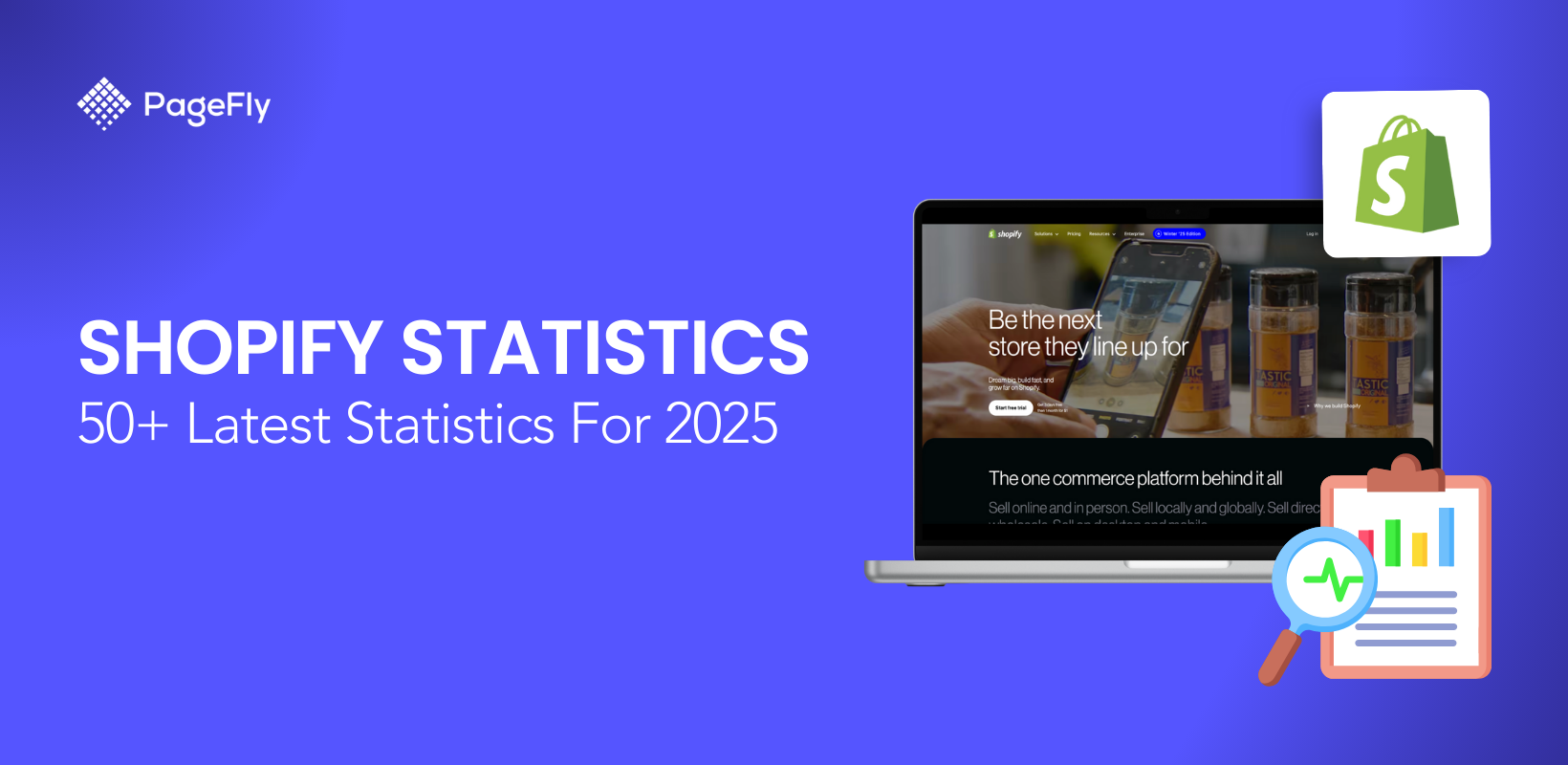Have you ever wondered why some online stores seem to attract traffic effortlessly while others struggle to gain visibility? One key aspect that sets successful sites apart is the structure and configuration of their URLs. For Shopify store owners, understanding and mastering Shopify URLs can significantly improve your store's SEO performance and enhance user experience, ultimately leading to increased sales.
- In this comprehensive guide, we will delve into the intricacies of Shopify URLs, addressing questions like:
- What exactly is a Shopify store URL, and how do I find it?
- How can I optimize my URL structure for better SEO?
- What are the best practices for creating SEO-friendly URLs?
- And how should I handle URL redirects to maintain traffic and rankings?
By tackling these questions, you'll be equipped with the knowledge needed to refine your online store's presence and connect with your target audience more effectively. Let's get started!
Understanding Shopify URLs
Shopify URLs are essential for navigating and managing your online store, as they provide a unique address for each page. These URLs help users and search engines easily find and understand the content they lead to, such as product pages or blog posts.

Source: Shopify
What is a Shopify URL?
A Shopify URL serves as the unique identifier for each page within your online store, allowing users and search engines to navigate and locate specific content. The structure of a Shopify URL is designed to provide clarity and relevance, often including key information about the page it directs to. For instance, a URL can reveal the type of content it leads to, such as products, collections, or blog entries, enhancing user experience by setting clear expectations before they click.
URLs in Shopify are generally composed of the following elements:
- Domain Name: This is the primary address of your store, which can either be a Shopify-hosted domain (e.g., yourstorename.myshopify.com) or a custom domain that you've purchased and linked to your store.
- Path: This part typically follows the domain name and defines the specific location of a webpage within your store. For example, in the URL `yourstorename.myshopify.com/products/product-name`, '/products/' indicates that the page is part of the products section, while 'product-name' points to a specific item within that category.
Effective management of your URL Shopify structure is key to ensuring that customers can easily navigate your store and find the products they're looking for. A well-structured Shopify URL improves site navigation and SEO performance. Descriptive keywords and a clean URL hierarchy help search engines understand page relevance, boosting visibility, traffic, and potential sales.
How to Find Your Shopify Store URL
You can find your Shopify URL in a few different places. First, navigate to 'Settings' from your Admin Dashboard. A new screen will appear, displaying your store information, including your '.myshopify.com' URL just below your store name.
Additionally, you can find your '.myshopify.com' URL by going to 'Settings > Domains,' where it will be listed among your domains.

Source: Shopify
Watch this video for quicker understanding onHow to find Shopify URL:
Knowing your store URL is essential for sharing with customers, integrating with third-party apps, and optimizing your Shopify SEO.
Optimizing Your Shopify URL Structure
Crafting an effective URL structure is one of the most vital steps in enhancing both user experience and search engine optimization for your Shopify store. A well-optimized URL should be intuitive and informative, allowing customers and search engines to understand the content of the page at a glance. Ideally, your URLs should be concise, avoiding unnecessary parameters or excessive length, while still incorporating relevant keywords that reflect the products or topics featured on the page.
Moreover, consistency in your URL structure can bolster your site's organization and improve navigation, making it easier for visitors to move through your store. This approach has a dual purpose: it helps users locate products quickly and enables search engines to crawl your site more efficiently.
In this section, we will outline the best practices for optimizing your Shopify URL structure, including practical tips on what to include in your URLs, common pitfalls to avoid, and how to effectively use keywords to enhance your site's visibility. By implementing these strategies, you can ensure that your URLs contribute positively to your overall SEO efforts while enhancing the user journey through your online store.
Tips for Creating SEO-Friendly URLs
A well-structured URL is not only user-friendly but also beneficial for SEO. Here are some tips to optimize your Shopify URL structure:
Using Keywords Naturally
Incorporate relevant keywords into your URLs to help search engines understand the content of your pages. For example, if you sell handmade candles, a URL like `yourstorename.com/products/handmade-candles` is more effective than `yourstorename.com/products/item123`.
Keeping URLs Concise and Readable
Short and readable URLs are easier for users to remember and share. Avoid long strings of numbers and unnecessary characters. For example, `yourstorename.com/collections/summer-sale` is preferable to `yourstorename.com/collections/summer-sale-2024-items-now-available`.
Avoiding Special Characters and Unnecessary Parameters
Special characters and parameters can make URLs look messy and confusing. Stick to hyphens to separate words and avoid using spaces, underscores, or special characters like `%` or `&`.
Examples of Optimized vs. Non-Optimized URLs
- Optimized URL: `yourstorename.com/products/organic-soap`
- Non-Optimized URL: `yourstorename.com/products/ item123456`
Handling Shopify URL Redirects
Proper URL redirects are crucial for maintaining a seamless user experience and preserving your site's SEO. By guiding users and search engines from outdated or broken links to the correct pages, you enhance user satisfaction and protect your website's search engine ranking.
Importance of Setting Up Proper URL Redirects
Broken links from moved, removed, or renamed pages can frustrate users, harm trust, and impact SEO. Implementing redirects helps guide users to the correct pages, maintaining their interest and protecting your site's authority and search visibility. URL redirects are crucial for preserving SEO value and providing a seamless user experience by preventing 404 errors and ensuring proper page direction.
301 Redirects vs. 302 Redirects
- 301 Redirect (Permanent):
A 301 redirect indicates that a page has permanently moved to a new URL. This type of redirect passes the majority of the original page’s SEO value to the new URL.
- 302 Redirect (Temporary):
A 302 redirect indicates that a page has temporarily moved to a new URL. This type of redirect does not pass the original page’s SEO value to the new URL.
Avoiding Broken Links and Preserving SEO Juice
When users encounter a broken link, they are often met with a frustrating 404 error page, which can lead to increased bounce rates and diminished trust in your store. This not only hampers customer satisfaction but also impacts your search engine rankings. Search engines like Google evaluate websites based on their reliability and user experience; broken links can be seen as red flags.
Therefore, it is crucial to regularly audit your site for any dead-end links and promptly address them through appropriate redirects or updates. By implementing a diligent link management strategy, you can preserve the valuable SEO 'juice' that contributes to your site's authority, ensuring that your store remains competitive in search results. Maintaining a healthy link structure is a proactive step that strengthens your store's overall performance and enhances the likelihood of converting visits into sales.
Broken links can harm your site's SEO and frustrate users. Regularly check for broken links and set up appropriate redirects to ensure a smooth user experience and maintain your SEO rankings.
Setting Up Redirects in Shopify
To set up URL redirects in Shopify, follow these steps:

- From your Shopify admin, click on "Settings" > "Apps and sales channels."
- Select "Online store" and click "Open sales channel."
- Click "Navigation" and then "View URL Redirects."
- Click "Create URL redirect."
- Enter the old URL in the "Redirect from" field and the new URL in the "Redirect to" field.
- Click "Save redirect."
Tools and Resources
Tools and resources for managing your site's URLs and redirects are crucial for optimizing performance and user experience. These tools help you monitor website health, track changes, and ensure that all links function correctly, ultimately supporting your site's visibility and effectiveness.
Google Search Console

Source: Google Search Console
Google Search Console is an essential tool for webmasters and store owners, providing insights into how your site performs in Google search results. It allows you to monitor your website's indexing status, submit sitemaps, and check for any crawl errors that may hinder visibility. Additionally, it offers data on search queries, click-through rates, and the keywords that drive traffic to your site.
Ahrefs

Source: Ahrefs
Ahrefs is a powerful SEO tool that provides comprehensive data analysis to help improve your online presence. Ahrefs is featured on Forbes' 2024 list of the best overall SEO software, reflecting its status as a top choice for comprehensive SEO analysis. This recognition highlights Ahrefs' effectiveness in tracking backlinks, optimizing SEO performance, and providing valuable insights for digital marketers.
Ahrefs offers powerful backlink analysis to track links, find link-building opportunities, and assess competitors. It also enables keyword research, ranking tracking, and content gap analysis, helping you refine SEO strategies and boost search visibility.
Screaming Frog SEO Spider

Source: Screaming Frog SEO Spider
The Screaming Frog SEO Spider is a desktop program that crawls websites to uncover various SEO issues. It systematically checks for broken links, identifies redirects, evaluates page titles and metadata, and analyzes response codes. This tool is particularly useful for optimizing your site's structure and addressing any technical SEO concerns that could hinder performance. By using this tool regularly, you can maintain a healthy website and ensure that all pages are functioning optimally.
Yoast SEO

Source: Yoast SEO
Yoast SEO is a popular plugin designed primarily for WordPress but applicable to SEO considerations across platforms, including Shopify. It provides actionable insights and recommendations to enhance your site's search engine optimization. With features like readability analysis, keyword optimization suggestions, and automated XML sitemap generation, Yoast greatly simplifies the process of improving your site’s SEO. You can ensure that your content is not only engaging for users but also appealing to search engine algorithms.
Conclusion
Mastering Shopify URLs is essential for improving your store's SEO performance and providing a better user experience. By understanding the basics of Shopify URL structure, optimizing your URLs for search engines, and handling redirects effectively, you can enhance your site's visibility and attract more customers.
Read more: A Complete Guide On Shopify SEO Checklist
Shopify Urls FAQ
Your Shopify URL is the web address used to access your store, typically formatted as yourstorename.myshopify.com.
To change your Shopify URL, go to your Shopify admin panel, click "Online Store" > "Domains," and follow the prompts to update your domain settings.
Log in to your Shopify admin panel, click "Online Store" > "Domains," and your primary domain will be displayed at the top of the page.
Your Shopify URL is automatically generated when you create your store. You can customize it by adding a custom domain through the "Domains" section in your Shopify admin.
Taking note and following the tips and strategies outlined in this guide, you can master Shopify URLs and take your e-commerce store to new heights. If you need further assistance, consider booking a consultation with one of our SEO experts to help you optimize your Shopify store.













